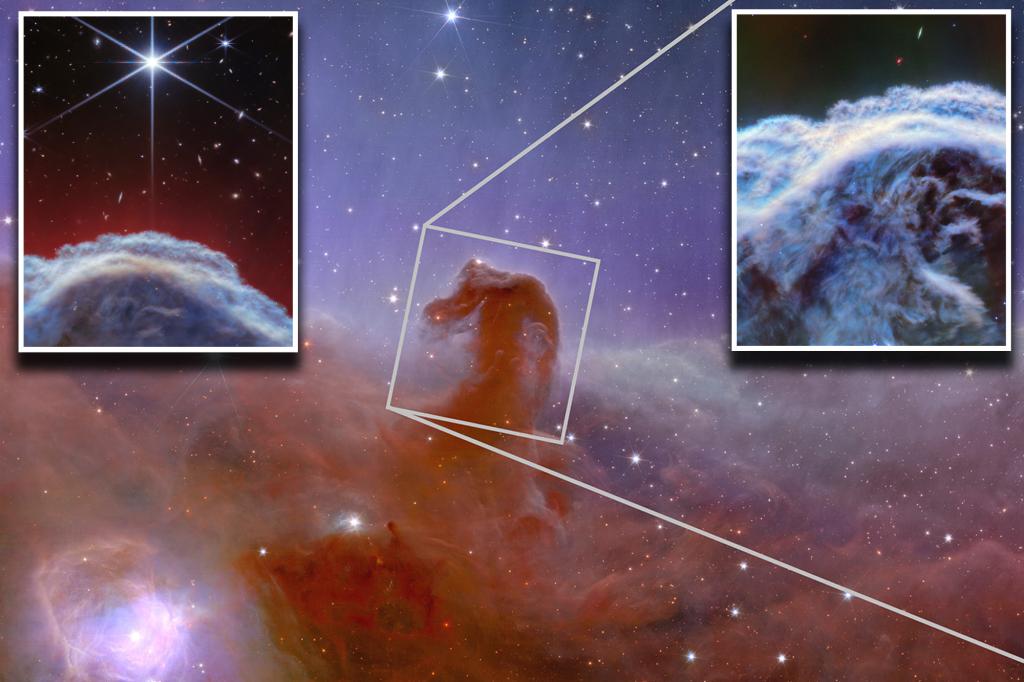New images taken by NASA’s Webb Space Telescope show the sharpest images of a horse-shaped nebula, known as the Horsehead Nebula, which is located 1,300 light years away in the constellation Orion. The nebula has a striking resemblance to a horse rearing its head and is illuminated by a nearby hot star. The Webb Space Telescope is able to detect infrared light at unprecedented resolutions, revealing details of the nebula that are not visible in optical telescopes.
The images captured by the Webb Space Telescope show how ultraviolet light is evaporating the dust cloud of the nebula, with particles being swept away by the outflow of heated gas. These detailed images will help refine astronomers’ understanding of the nebula, which has been a favorite target for space observatories such as the Hubble Space Telescope. The Horsehead Nebula is an ideal target for studying the physical structures of such formations, known as photodissociation regions, and for understanding how radiation interacts with interstellar matter.
The Webb Space Telescope images also reveal the molecular evolution of the gas and dust within their environments, as well as the transition regions between them. Astronomers are able to investigate how dust blocks and emits light, and understand the multidimensional shape of the nebula. Last year, the nebula was captured by Euclid’s as part of a group of five stunning new space images released by the European Space Agency, which is working towards creating a groundbreaking 3D map of the universe.
The Horsehead Nebula is a cloud of gas and dust visible in the night sky that has been a popular subject for space observatories due to its unique appearance and position in the constellation Orion. With its horse-shaped structure and illuminated mane, the nebula provides astronomers with a unique opportunity to study how radiation interacts with interstellar matter and the physical structures of photodissociation regions. The Webb Space Telescope’s detailed images offer a new perspective on the nebula’s formation and evolution.
NASA revealed that ultraviolet light is causing the dust cloud of the Horsehead Nebula to evaporate, with particles being swept away by the outflow of heated gas. These findings will help astronomers refine their understanding of the nebula and gain insights into the molecular evolution of the gas and dust within the nebula. The images also allow for investigations into how dust blocks and emits light, as well as the multidimensional shape of the nebula.
The European Space Agency’s Euclid mission, launched from Florida’s Cape Canaveral, aims to create a groundbreaking 3D map of the universe to uncover hidden secrets. The mission has captured stunning images of the Horsehead Nebula and other celestial objects to further scientific research and understanding of the cosmos. The images taken by both the Webb Space Telescope and Euclid mission provide valuable insights into the formation and evolution of the Horsehead Nebula and other cosmic phenomena.













